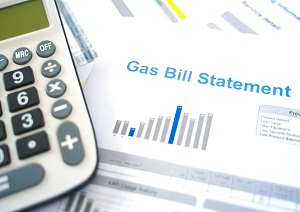Fall and Winter Energy Saving Tips
As fall approaches and the cost of gas and electric bills are sure to rise due to colder weather and holiday events, here are some tips that may help keep your bill down:
Take Advantage of Heat from the Sun
Open curtains on the south-facing windows during the day to allow sunlight to naturally heat the home and close them at night to reduce the chill from cold windows. Be certain to plant deciduous tress on the south facing side of the home, especially in proximity to windows. They will let the light and warmth in the windows during the winter and will shade the windows in the summer.
Cover Drafty Windows
Use heavy-duty, clear plastic sheet on a frame or tape clear plastic film to the inside of the window frames during the cold winter months. Make sure the plastic is sealed tightly to the frame to help reduce infiltration. Install tight-fitting, insulating drapes or shades on windows that feel drafty after weatherizing.
Adjust the Temperature
When you are home and awake, set the thermostat as low as is comfortable. When you are asleep or out of the house for an extended period of time, turn the thermostat back to save as much as 10% on your heating bills. A programmable thermostat can make it easy to automatically adjust the temperatures so you don’t have to do it each day.
Maintain Your Heating Systems
Schedule routine service for your home’s heating system. Replace the heating system filters once a month or as needed. Regularly clean the flue vent of wood and pellet burning heaters and clean the inside of appliance with a wire brush periodically to ensure it is heating efficiently.
Reduce Heat Loss from the Fireplace
Keep the fireplace damper closed unless a fire is burning. Keeping the damper open is like keeping a window open during the winter; it allows warm air to go right up the chimney. When using the fireplace, reduce heat loss by opening dampers in the bottom of the firebox (if applicable) or open the nearest window slightly, about 1 inch, and close doors leading to the room. If you don’t use your fireplace, seal the chimney flue.
Lower Water Heating Costs
Keep the temperature of the water heater to the warm setting (about 120 degrees). This will not only save energy, but will avoid scalding as well.
Content provided by energy.gov.



